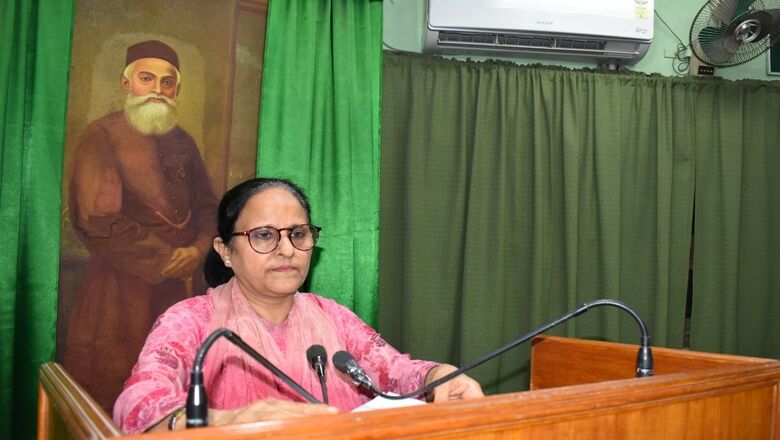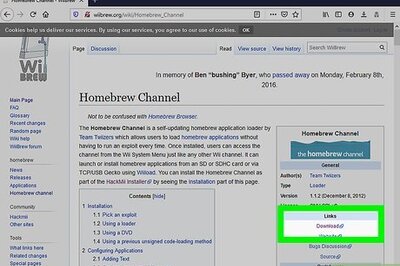
views
“I have heard about this beautiful library nine years ago and ever since I have had the desire to visit it. It has given me great joy to be able to examine the rich collection of rare books, which the keepers so patiently and so kindly showcase to me the books are works of art…” Mahatma Gandhi wrote this note on his visit to the Khuda Bakhsh Oriental Library (September 1925), which the library has preserved in its collection. Impressed by the dedicated work done by the staff at the time in preserving the unique collection, he fondly remembered the founder. “I revere the memory of the great founder who has spared no pennies or money to present India with such a rare collection,” Gandhi wrote.
Dr Shayesta Bedar, the present director of the nearly 130-year-old library, is shuffling through all the significant letters and notes to emphasise its place in history and the heart of India. Since childhood, she has seen the library grow, gather global recognition, and preserve the past, as her father Dr Abid Raza Bedar the founding director of this book repository, was enthusiastically pursuing it.
The Nitish Kumar government has proposed an elevated flyover project that will cover Kargil Chowk and NIT Mod, and in between some heritage buildings envied for their glorious front façade are expected to face the damage. This includes the historical Curzon Reading Room of the Khuda Bakhsh Library and its front garden. The move has prompted protests from many scholars, historians, litterateurs and some politicians too.
“It’s not about a portion being considered for damage, it is about our heritage not being seen holistically. How this centre is the repository of India’s past and has helped in scholarly intellectual relations with countries in Central Asia is being completely overlooked,” Bedar said.
Khuda Bakhsh Library is the collection of Maulvi Mohammad Bakhsh, who belonged to Bihar’s Chhapra area. He was known as “a man of letters and law and had a great passion for books. He collected about 1,400 manuscripts including some rare printed books”, according to the library’s website.
The library was opened to the public on October 29, 1891, by Khan Bahadur Khuda Bakhsh. At the time there were 4,000 manuscripts, of which he inherited 1,400 from his father Maulvi Mohammad Bakhsh.
Bedar added that the current planners did not exhibit any sensitivity to the cultural ethos of this library, which is in sync with commingling and exchange of ideas. “The government did not think about the ugliness it is going to throw at the heritage building. These buildings have individuality, and the attack on a portion is to be seen in totality,” said Bedar.
This library has a proud collection that has also been listed in world projects by UNESCO, like ‘Tarikh-e-Khandan-e- Timuriyah’, which “recounts the history of the Timurids or Timur and his successors in Iran and India”, Bedar said.
According to the information on the UNESCO website, this manuscript is a “documentary heritage submitted by India and recommended for inclusion in the Memory of the World Register in 2011”.
This is a richly illustrated manuscript that was written and created twenty-two years into the reign of Mughal emperor and descendant of Timur, Jalaluddin Mohammad Akbar, in 1577-78 AD.
“The paintings of the Tarikh-e Khandan-e Timuriyah are unique examples of the height that was attained by the Mughals in the history of the art of painting,” as per UNESCO website.
Other rare manuscripts include ‘Kitabul-Hashaish’ (Arabic medicines) and ‘Kitab-Al-Tasrif’ describing surgical science with illustrations. In addition to them, there’s the ‘Diwan-e-Hafiz’, which bears the writings of Humayun and Jahangir.
The National Mission for Manuscripts has identified these four (mentioned above) as manuscripts with unique heritage value, and has designated them as ‘Manuscript Treasures of India’.
These are the rare manuscripts among the collection of thousands of others, like ‘Sirat-e-Firoz Shahi’, which is a unique and only known copy of the text dated 1002 AH/1593-94 AD.
It is an extended and enlarged version of the ‘Futuhat-e Firoz Shahi’, the short autobiographical writing of Firoz Shah. Sultan Firoz Shah (1351-88) was the last great ruler of the Tughlaq dynasty. This was the last Turkish dynasty to rule over India that rose to power in 1320 CE. It was replaced by the Syed dynasty in 1414.
There are also artworks from different periods of Indian history.
One can also find the oldest Hindi dictionary, written by Mirza Khan Bin Fakhruddin Muhammad. “It was compiled to teach Urdu to the Persian-speaking royals,” Bedar said.
A library is unique for many reasons but the most important is that it makes a society humane, she said. “A library is unique for its collection, but it is also an entity that busts myths, bridges gaps and builds communities together, leaving no room for suspicion,” Bedar added.
Proud of the heritage and current projects, she said one can find one of finest works on Hindu religion, ‘Hindu Dharma in Bihar (1846-1927)’, originally written by Shad Azimabadi, a renowned literary figure of the region.
The library is working on translating ‘Sanskriti Ke Char Adhyay’ by Ramdhari Singh Dinkar as well. “Libraries make societies; we have to collectively stand to resist this proposal. It was the dream of the founder, Khuda Bakhsh, which was nurtured by the Indian leadership,” said Bedar.
Read all the Latest News, Breaking News and Coronavirus News here. Follow us on Facebook, Twitter and Telegram.
















Comments
0 comment